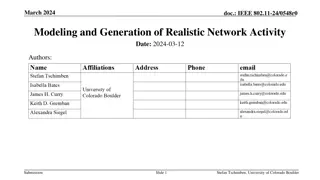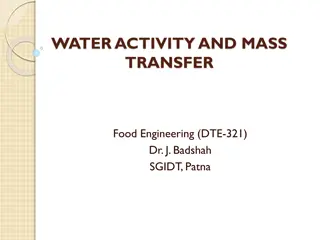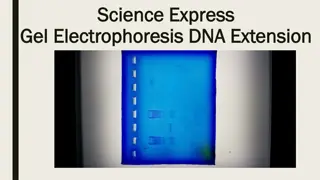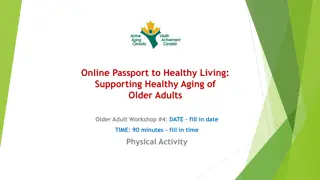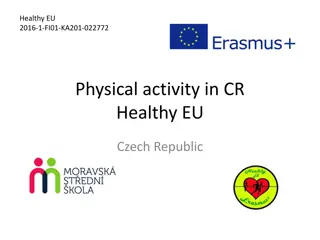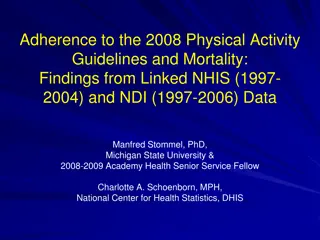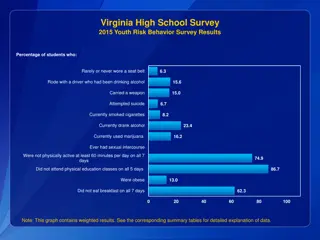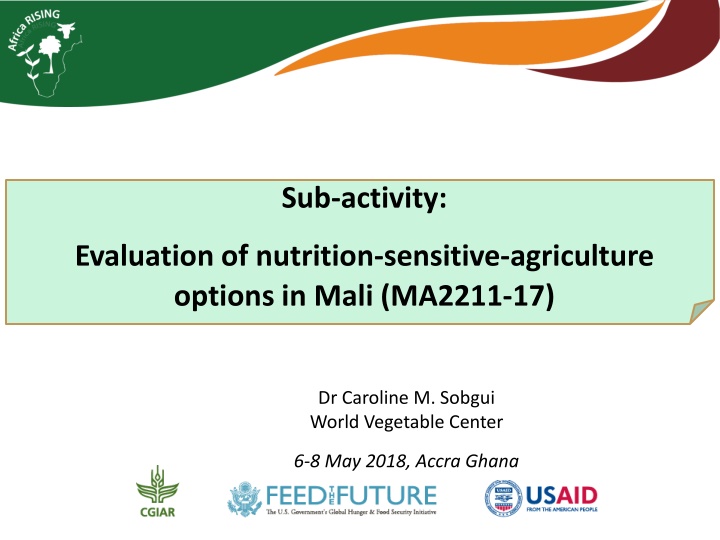
Evaluation of Nutrition-Sensitive Agriculture Options in Mali
Explore the evaluation of nutrition-sensitive agriculture options in Mali led by Dr. Caroline M. Sobgui, focusing on home garden establishment, nutrition practices training, and data collection on key indicators related to child nutrition. The initiative includes seed kits distribution, home garden implementation, training on nutrition best practices, and social and behavior communication on health and nutrition. Quantitative and qualitative evaluations are conducted to assess the impact of vegetable seed kits distribution on farmers in different villages.
Download Presentation

Please find below an Image/Link to download the presentation.
The content on the website is provided AS IS for your information and personal use only. It may not be sold, licensed, or shared on other websites without obtaining consent from the author. If you encounter any issues during the download, it is possible that the publisher has removed the file from their server.
You are allowed to download the files provided on this website for personal or commercial use, subject to the condition that they are used lawfully. All files are the property of their respective owners.
The content on the website is provided AS IS for your information and personal use only. It may not be sold, licensed, or shared on other websites without obtaining consent from the author.
E N D
Presentation Transcript
Sub-activity: Evaluation of nutrition-sensitive-agriculture options in Mali (MA2211-17) Dr Caroline M. Sobgui World Vegetable Center 6-8 May 2018, Accra Ghana
Outcome no._ 1 Output no._ _1.1 Activity no._ _1.1.1 Sub-activity title MA2211-17 Evaluation of nutrition-sensitive-agriculture options in Mali Location/sites for sub- activity 1. Mpessoba & Sirak l in Koutiala, Sikasso Region (Mali) Implementation timeframe (start/end date) 1. 1 April 2017 31 March 2018 Deliverables achieved 1. Establishment of home garden (nutrition garden) and monitoring_ 2. Training in best nutrition practices and awareness S.I. domain and indicators for which data was collected indicate metric and scale : Percent of households cultivating these crops in Mali, 2018 1. Prevalence of stunting (6-23 months old) (%)Second crop: African eggplant 2. Prevalence of wasting (6-23 months old) (%) 3. Prevalence of children receiving a diet of minimum diversity (6-23 months old) (%) 4. Percentage of adult with adequate knowledge on breastfeeding (%)Fifth crop: Cowpea for leaves 5. Percentage of children exclusively breastfed (%) Indicator is Nutrition 6. Percentage of adult with adequate knowledge on complementary feeding (%) Indicator is Equity in the Social domain 7. Timely introduction of complementary feeding (%) Research team involved 1. Caroline M. Sobgui 2. Honafing Diarra 3. Jean Baptiste Tignegre 4. Alpha S. Traore_ _ Farming systems research perspective (how this work links with other sub- activities) 1. Communication for social and behavior change will focus on dietary diversification and production and consumption of a large varieties of crops including cereals, legumes, tubers, fruits and also animal foods including poultry, eggs, small ruminants.
Activities implemented Seed KITs distribution and implementation of home gardens Training on good practices on nutrition and home gardens Social and Behaviour Communication on nutrition and health Quantitative & qualitative evaluation of the nutrition component
2. Production and distribution of vegetable seed kits Village Neighbouri ng Numbe r of farmers 36 Okra (kg) African eggplant (kg) 2510 Tomato (kg) Hot pepper (kg) 348 Amaranth Sweet potato leaves M pesso ba Lassanabougo u Kamona 1335 2477 353 887 36 37 36 36 36 36 36 36 37 36 36 434 1359 1157 1197 1071 1232 1181 1239 1252 1249 1670 1333 15275 1974 1955 1773 1818 1783 1662 1545 1875 1847 1923 1960 22625 2375 2379 2150 2258 2220 2193 2163 2316 2367 2250 2474 27622 315 357 257 310 330 328 319 329 362 360 435 4056 399 444 429 499 450 440 442 445 409 469 455 5234 823 Hamdalaye 881 Dongolosso 840 741 771 819 832 836 856 799 775 9860 Sitiola Drissabougou Sirak l Z r sso Bl djoula Zansoni Karaba Nianz sso Zibala TOTAL
2. Social and Behaviour Communication on nutrition and health - Behaviour Change communication on nutrition and health covered different main topics on infant and young child feeding practices - 534 beneficiaries including 490 women were reached by nutrition activities
Quantitative & qualitative evaluation of Nutrition component
Quantitative evaluation: Methodology It was a community based cross-sectional study conducted in 2 intervention communes and 2 control communes in Skasso Region, Mali (Feb. 2018) 803 households/women at child bearing age were targeted A structured interviewer-administered questionnaire was used. Data collected from mothers and heads of household on vegetable production, women dietary diversity and food security.
Consumption of some key food groups by women in intervention Communities vs non intervention Com. Variables Vitamin A Rich vegetables Green leafy vegetables Non-Vitamin A rich vegetables (other vegetables) Vitamin A rich fruits Non-Vitamin A rich fruits (other fruits) Organ meats Flesh meats Eggs Fish Milk and milk products Nuts and seeds Legumes and pulses Control (%) Intervention (%) P value 83 (25) 228 (68) 209 (62) 96 (24) 285 (70) 293 (71) 0.36 0.35 0.005* 33 (9) 62 (19) 54 (13) 101 (25) 0.09 0.02* 9 (3) 19 (2) 101 (25) 39 (9) 269 (66) 236 (57) 128 (31) 207 (51) 0.11 0.20 73 (22) 12 (4) 194 (58) 174 (52) 92 (27) 161 (48) 0.001* 0.02* 0.07 0.15 0.27
Qualitative evaluation: Methodology Objective: Understand the impact of the project on knowledge attitude and practices of target communities as related to infant and young child feeding practices and health practices and the adequacy of the communication strategy Methodology: - Focus group discussions and semi-structured individual interviews were conducted with beneficiaries who received training in vegetable production and participated to nutrition and health behavior change communication - Participants were randomly selected from beneficiaries who were available Discussion and interview transcripts were analyzed using content thematic analysis and data analyses was done using SPSS software
Consumption of some key food groups by children aged 6-59 months in intervention communities vs control communities Variables Control (%) Intervention (%) Vitamin A Rich vegetables 81 (23) Green leafy vegetables 181 (57) Non-Vitamin A rich vegetables (other vegetables) Vitamin A rich fruits Non-Vitamin A rich fruits (other fruits) Organ meats Flesh meats 50 (16) Eggs Fish 159 (51) Milk and milk products 176 (56) Legumes, nuts and seeds 94 (30) P value 0.34 0.42 0.17 85 (22) 218 ((-) 184 (48) 162 (51) 24 (8) 55 (17) 46 (12) 81 (21) 0.04* 0.12 3 (0.1) 23 (6) 73 (19) 46 (12) 207 (54) 225 (58) 91 (23) <0.0001* 0.17 6 (2) <0.0001* 0.24 0.07 0.03*
Can list three vitamin and mineral rich foods Can list three vegetal protein rich foods Can list three animal protein rich foods Can list three energy rich foods Yes No 0 20 40 60 80 100 Nutrition knowledge by beneficiaries from Sirakele and Mpessoba, Mali; 2018
Conclusion - 86% of interviewed beneficiaries have established a vegetable garden - For 82% of them, home garden production is mainly used to enrich household diet and only the surplus is to be sold. - There was improvement of health and behavior; pregnant women and young children are more healthy and the rate of malnutrition cases has decreased. There was ignificant reduction in use of therapeutic foods (RUTF) in Sirak l since 8 months (confirmed by local head of the health center of Sirak l ) Behavior change communication sessions and cooking demonstrations improved women nutrition
Conclusion (Contd.) Raise of awareness on the integrated approach to tackle malnutrition due to project beneficiaries and community support groups Decreased frequency of visit to the health center for curative services Increase of number of visits by patients to the Center for preventive treatments (antenatal care, child growth monitoring, post natal care and immunization) Training tools in Bambara (counseling cards and nutrition posters) were effective to transfer the message from project staff to beneficiaries
Thank You Africa Research in Sustainable Intensification for the Next Generation africa-rising.net This presentation is licensed for use under the Creative Commons Attribution 4.0 International Licence.


